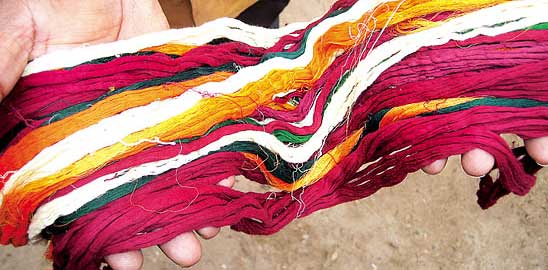Chirala saree weavers losing out to computer aided designs
 The loom in Aruna Kumari's badly lit, mud-walled house in Epurupalem village runs from 5 a.m. to 11 p.m., with either Aruna or her husband working at it constantly. Her ageing grandmother contributes by winding spools of yarn and joining threads of the weft for 10 hours daily. Together, the family produces 13 Chirala sarees with ornate, heavy-work pallu and border in a month, for a combined income of a little over Rs 4,000. "By next year my daughter will be old enough to help, and then my grandmother will get some relief,' says Aruna. This means 11-year-old Cheluvi will have to drop out of school.
The loom in Aruna Kumari's badly lit, mud-walled house in Epurupalem village runs from 5 a.m. to 11 p.m., with either Aruna or her husband working at it constantly. Her ageing grandmother contributes by winding spools of yarn and joining threads of the weft for 10 hours daily. Together, the family produces 13 Chirala sarees with ornate, heavy-work pallu and border in a month, for a combined income of a little over Rs 4,000. "By next year my daughter will be old enough to help, and then my grandmother will get some relief,' says Aruna. This means 11-year-old Cheluvi will have to drop out of school.
In Chirala and Vetapalem mandalas of Ongole district in Andhra Pradesh, around 10,000 families of handloom weavers, mostly of the Mala caste, and 400 families of the Oruganti Reddy caste who dye and process the yarn, are working and living in conditions similar to Aruna's. Another 800 families of weavers and over 600 families of dyers have been forced out of business.
Upholders of the tradition of the Chirala saree, telia rumal and Pattamarapu
